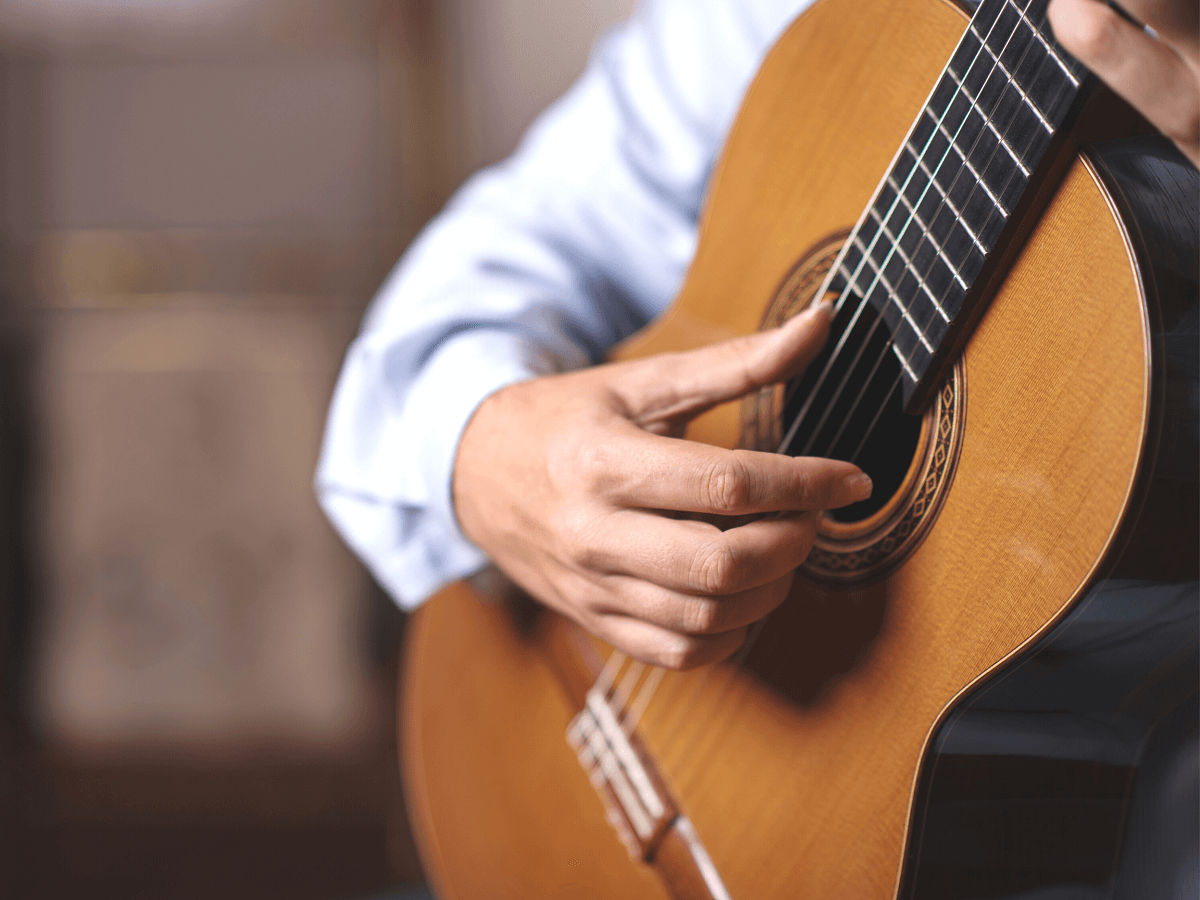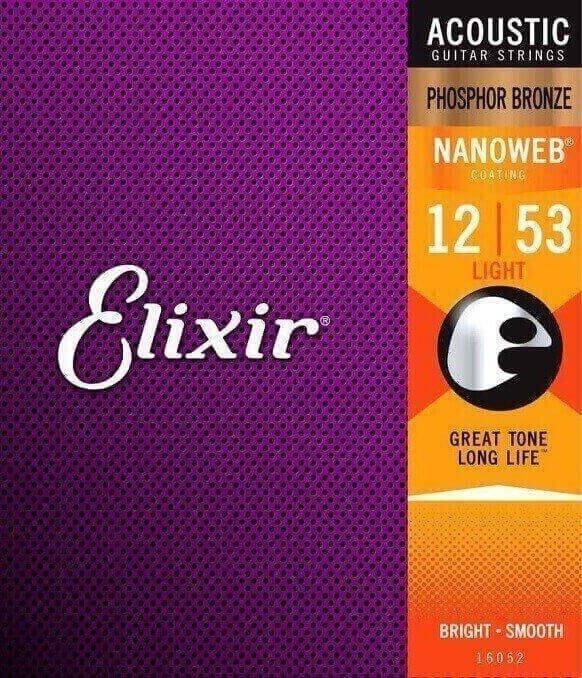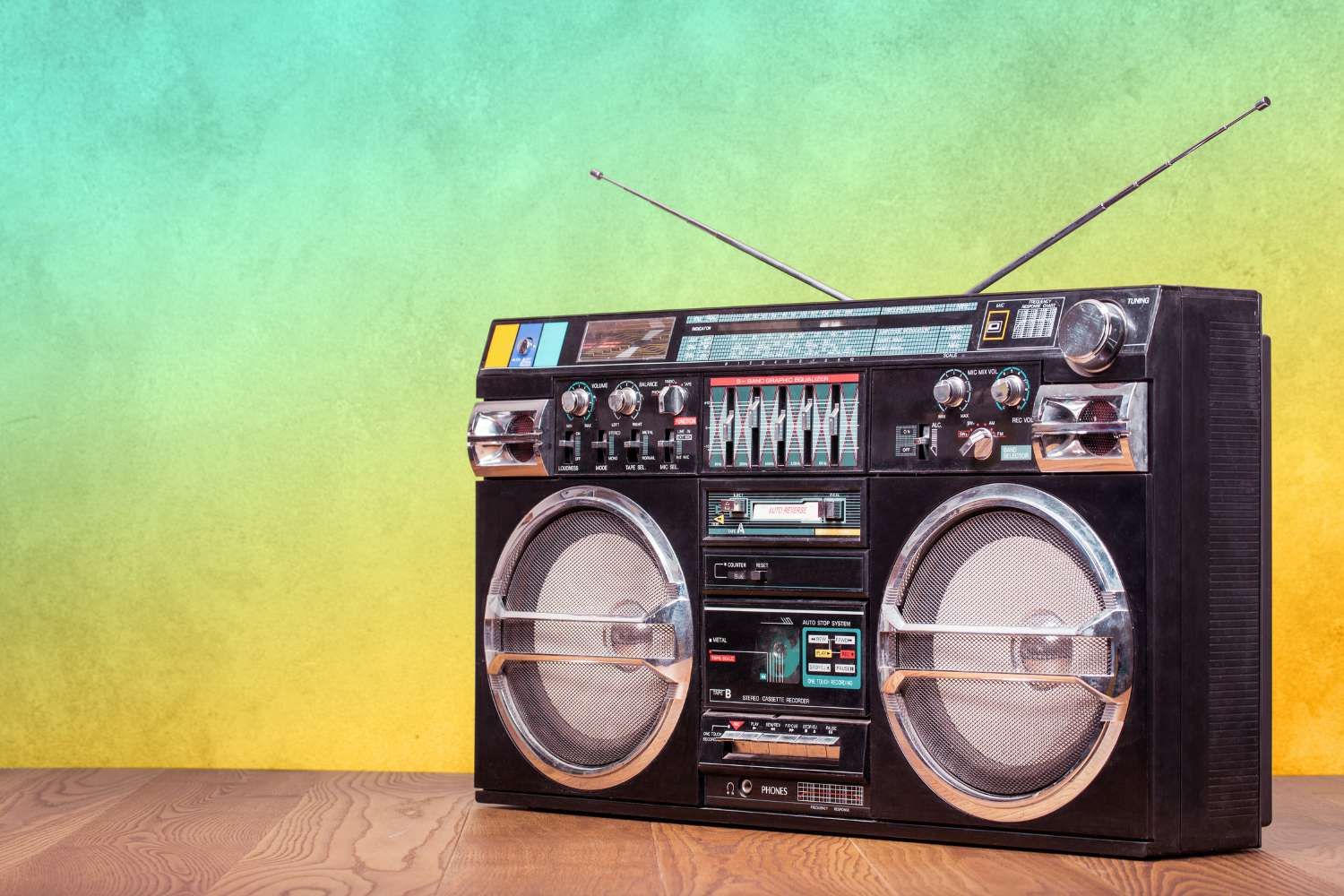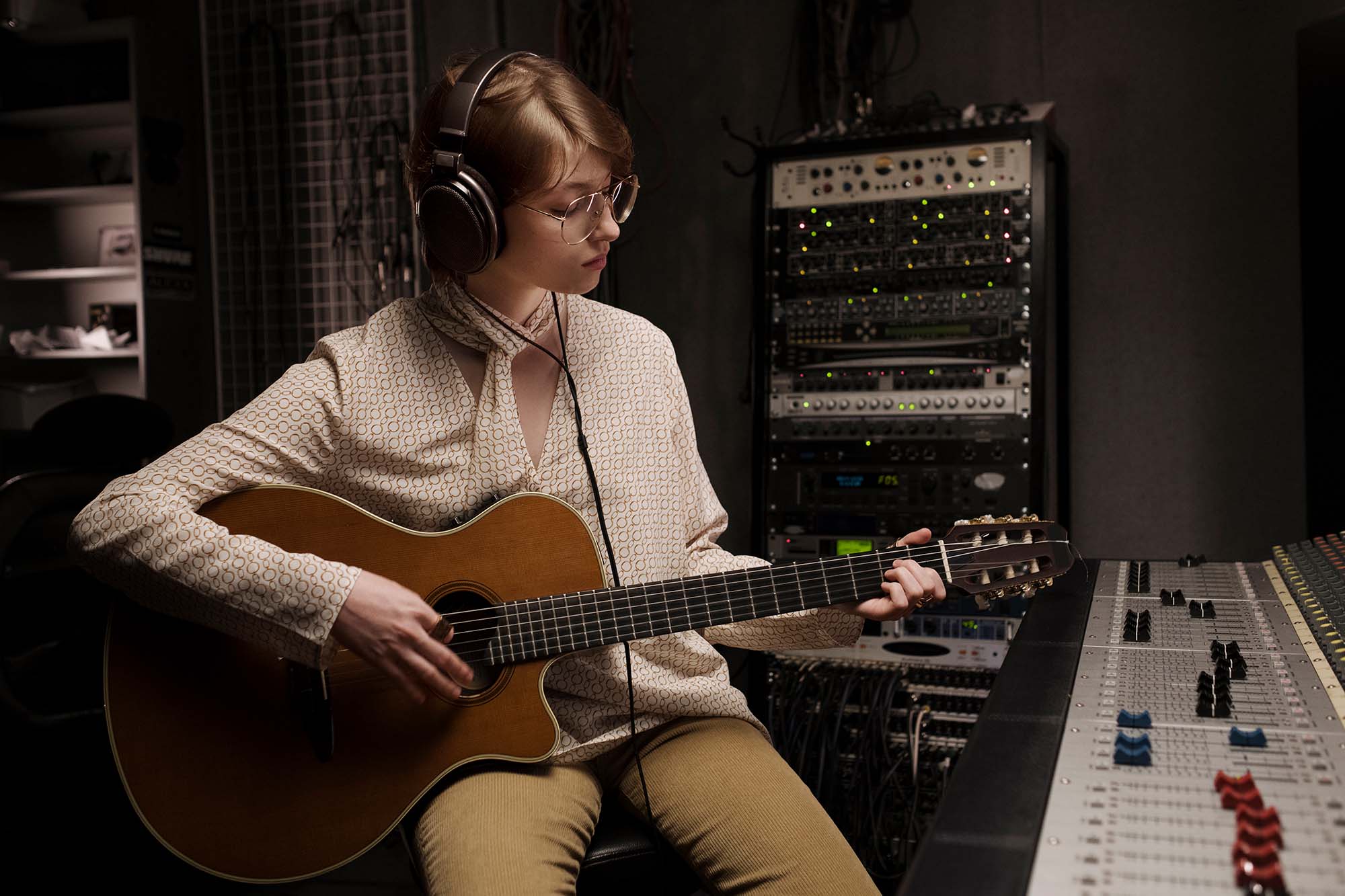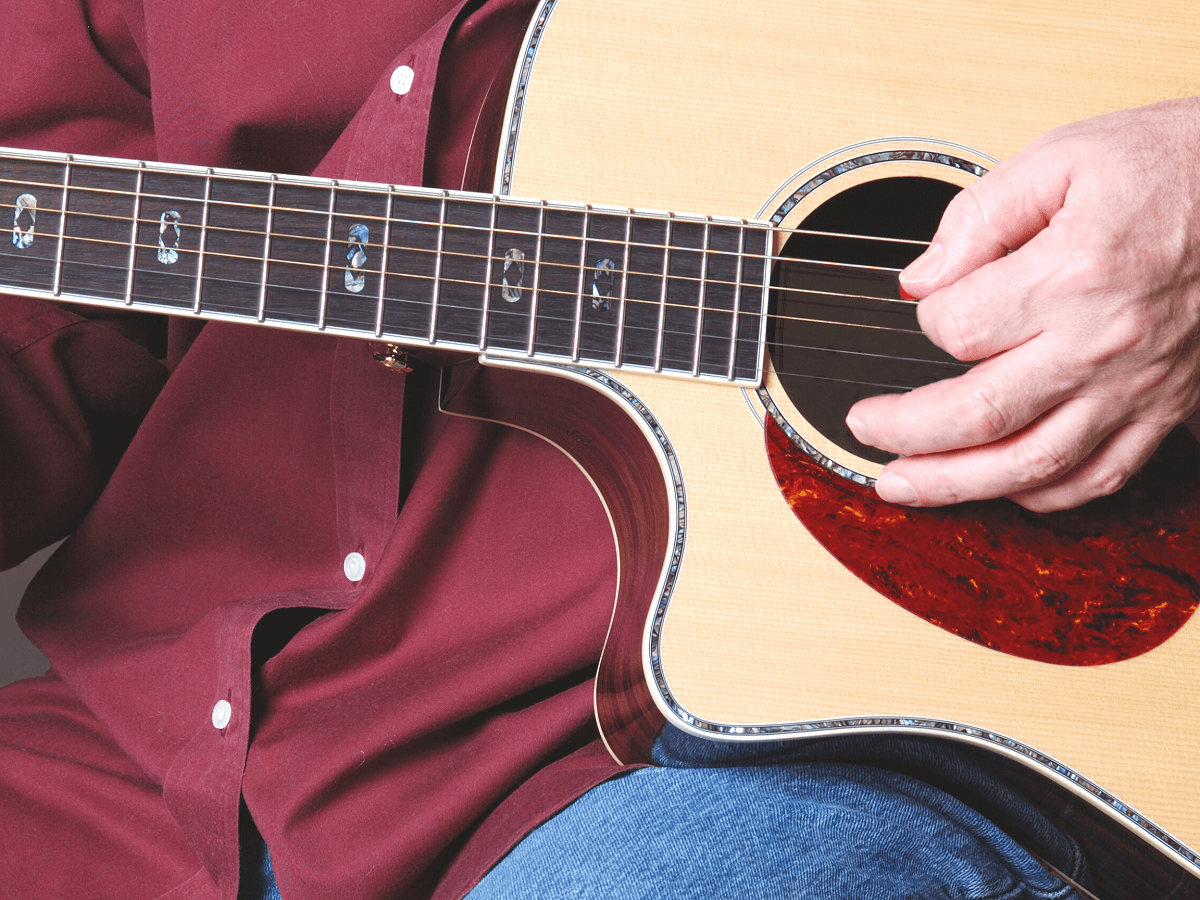Fingerstyle guitar is a technique that involves using your fingers to pluck the strings of the guitar, rather than using a pick.
This style of playing can be used for a variety of genres, including folk, blues, jazz, and even rock.
While it takes some time to get used to fingerstyle playing, it can be a very rewarding experience, both in terms of the sound you can create and the level of control you have over the instrument.
If you’re interested in learning to play fingerstyle guitar or are simply looking for a new acoustic guitar that’s well-suited to this style of playing, then read on!
In this post, I’ll share with you some of the best acoustic guitars for fingerstyle playing, in terms of both quality and value.
Additionally, I’ll also answer some common questions about fingerstyle guitar and share some tips on how to get better at it.
Let’s get started!
Table of Contents
- Best Acoustic Guitars For Fingerstyle
- How to choose an acoustic guitar for fingerstyle?
- How much should you spend on a fingerstyle acoustic guitar?
- What’s the best size for a finger-picking acoustic guitar?
- What to consider before buying an acoustic guitar for fingerpicking?
- Is learning to play fingerstyle on an acoustic guitar hard?
- Do you need long fingernails to play fingerstyle guitar?
- What is the difference between cheap guitars and expensive acoustic guitars?
- What strings are best for an acoustic guitar?
Best Acoustic Guitars For Fingerstyle
Summary of all the products that we’ll talk about:
Fender CD-60S All-Mahogany Dreadnought Acoustic Guitar
(link to Amazon.com)
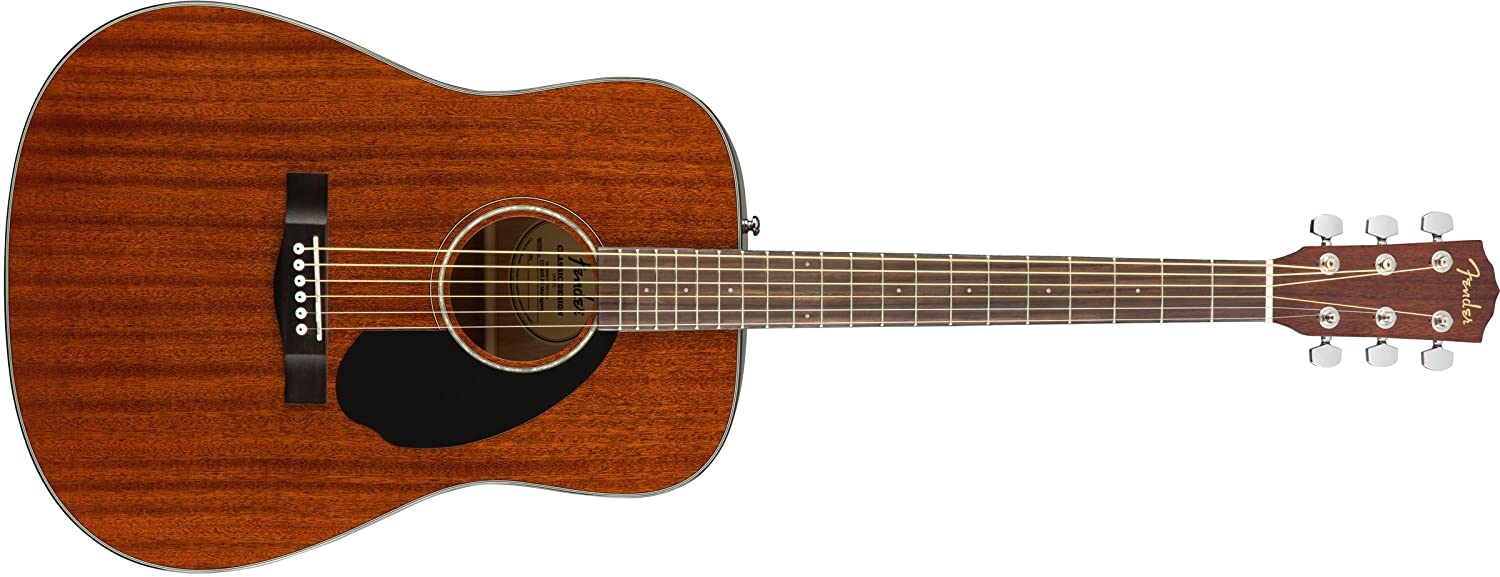
The Fender CD-60S All-Mahogany Dreadnought Acoustic Guitar is a great choice for beginner and intermediate guitarists alike.
Its solid mahogany top provides a warm, rich tone that responds well to any playing style, while the easy-to-play neck makes it comfortable for both new players and experienced pros.
The mahogany back and sides add to the balance of this guitar’s tone, providing plenty of volume and midrange, which is perfect for couch playing, small gigs, or even on the beach.
With its chrome die-cast tuners, 12″ fingerboard radius, and 25.5″ scale mahogany neck, this guitar is a great option for those looking for a decent-quality and affordable dreadnought with classic Fender playability and sound.
Additionally, we also found the CD-60S to have a very clear and articulate voice, with good projection.
The body has a scalloped X-Bracing, which allows the soundboard to vibrate more freely and produce a louder, richer tone.
Overall, although this is still a beginner guitar, for those looking to get into fingerstyle playing without breaking the bank, this should be on your radar.
Pros:
- Solid mahogany top provides a warm, rich tone
- Easy-to-play neck makes it comfortable for new players
- Classic Fender playability and sound
- Scalloped X-Bracing produces a louder, richer tone
Cons:
- Still a beginner, low-cost guitar after all
Taylor BBT Big Baby Taylor Acoustic Guitar
(link to Amazon.com)
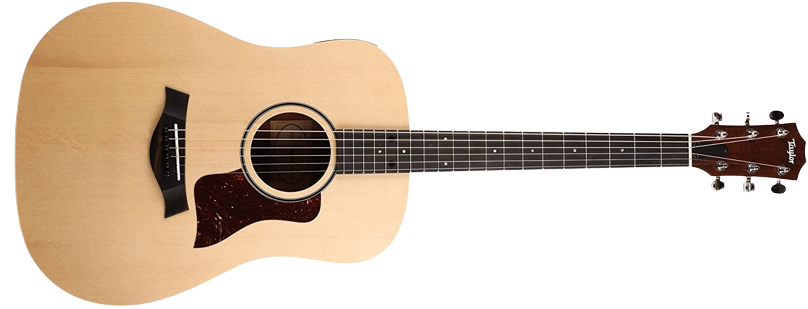
The Taylor Big Baby Taylor is a great-sounding and fairly-priced acoustic guitar that is perfect for fingerstyle playing.
Featuring a layered walnut body with a Sitka spruce top, this guitar has a rich and full sound that is perfect for any style of music.
Taylor Guitars has been making quality acoustic guitars for years, and the Big Baby Taylor is no exception, I would go as far as to say it sounds better than some of their full-sized models.
What people love about Taylor Guitars is really just that they are extremely well-made and they sound great.
Its hard rock maple neck with West African ebony fingerboard feels great to play and the guitar stays in tune very well.
This guitar also comes equipped with built-in electronics, making it easy to plug into an amplifier or PA system and start playing.
If you’re eventually looking to get into playing live shows, this is a great feature to have since you won’t need to worry about buying a separate acoustic-electric guitar.
Overall, this model has never failed to impress me both in terms of its sound quality and playability, and I would highly recommend you have it on top of your list if you’re looking for a new acoustic guitar.
Pros:
- Great sound quality
- Well made and priced
- Perfect for fingerstyle playing
- Built in electronics to easily plug into an amplifier
Cons:
- Not any that come to mind!
Martin DJr-10E Acoustic Guitar

Ibanez TCY10E Acoustic Electric Guitar
(link to Amazon.com)

The Ibanez TCY10E Acoustic Electric Guitar is a great choice for electric guitarists who want to be able to play acoustic guitar with the same level of comfort and ease.
This guitar features a spruce top, mahogany back and sides, and a rosewood fretboard and bridge.
The Ibanez piezo pickup and AEQ200T preamp with 2-band EQ and onboard tuner make it easy to get great sound out of this guitar.
Its black high-gloss finish looks great and the Ivorex II nut and saddle add to the overall quality of the guitar.
My initial thoughts were that for its price, this guitar is an excellent value and would be perfect for anyone looking for a good quality acoustic-electric guitar.
However, after playing it for a while, I found that the tone was not as rich and full as I would like it to be.
But still, it is a great option that’s perfect for beginners that want to learn how to play both acoustic and electric guitars.
Pros:
- Acoustic-Electric guitar with great features for the price
- Ibanez piezo pickup and AEQ200T preamp with 2-band EQ and onboard tuner
Cons:
- Tone not as rich and full as I would like it to be
Yamaha FG800 Acoustic Guitar
(link to Amazon.com)
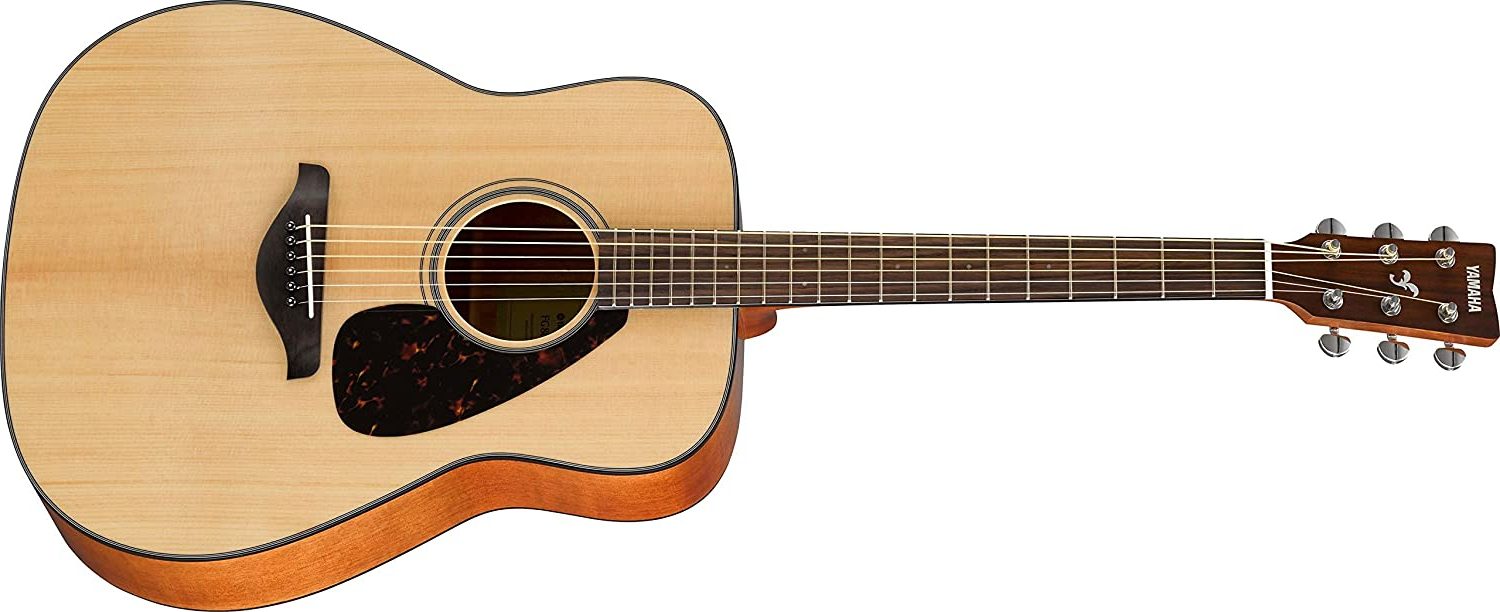
The Yamaha FG800 is an acoustic guitar that is also great for intermediate players. It features a solid Sitka spruce top, a nato back and sides, a rosewood fingerboard, and a rosewood bridge.
It has an adjustable truss rod, which essentially means that the guitar can be customized to a player’s preference in terms of how straight or curved the neck is.
The FG800 is a great choice for those who are looking for a guitar that has a louder and stronger sound in the low to mid ranges.
Additionally, the FG800 has a new scalloped bracing pattern which helps to bring out more of the natural sound of the instrument.
We saw this instrument as a great low-cost option for intermediate players; not always does being better at playing guitar means having to spend more money.
So if you’re looking into upgrading from a beginner’s guitar but aren’t ready to spend a fortune, this should be one of your top considerations.
Yamaha has been making guitars for years, and the FG800 is proof that they know a thing or two about what they’re doing.
With great playability, musical tone, and outstanding build quality, this guitar is sure to be a lifelong partner for any musician.
Pros:
- Adjustable truss rod
- New scalloped bracing pattern
- Loud and strong sound in the low to mid ranges
Cons:
- Better options out there, but at a higher price point
Takamine GD20CE-NS Acoustic-Electric Guitar
(link to Amazon.com)

Takamine guitars are fairly well-known in the guitar world although I would say they aren’t as ubiquitous as, say, a Fender or Gibson.
The GD20CE is a dreadnought-style acoustic/electric guitar which means it’s built for sounds that need to fill a room – like country, rock, and blues.
With this guitar, Takamine decided to mix things up a bit by using cedar for the top wood instead of the more traditional spruce.
They also used mahogany for the back and sides which contributes to the GD20CE’s warm, detailed tone.
In other words, this guitar might be better suited for players who are looking for something a little different in terms of sound.
Its TP-4TD preamp system also gives you a built-in tuner with three-band EQ and gain controls so you can really dial in your sound when playing amplified.
Other features include a synthetic bone nut, split bridge saddle, and rosewood head cap.
The GD20CE also comes in a natural satin finish which looks really elegant and adds a lot of visual interest to the guitar.
Pros:
- TP-4TD preamp system included
- Perfect for players looking for a different sound
- Solid cedar top with mahogany back and sides produces a warm, detailed tone
- Elegant natural satin finish
Cons:
- Might not be the best choice for beginners
Yamaha C40II Classical Guitar
(link to Amazon.com)
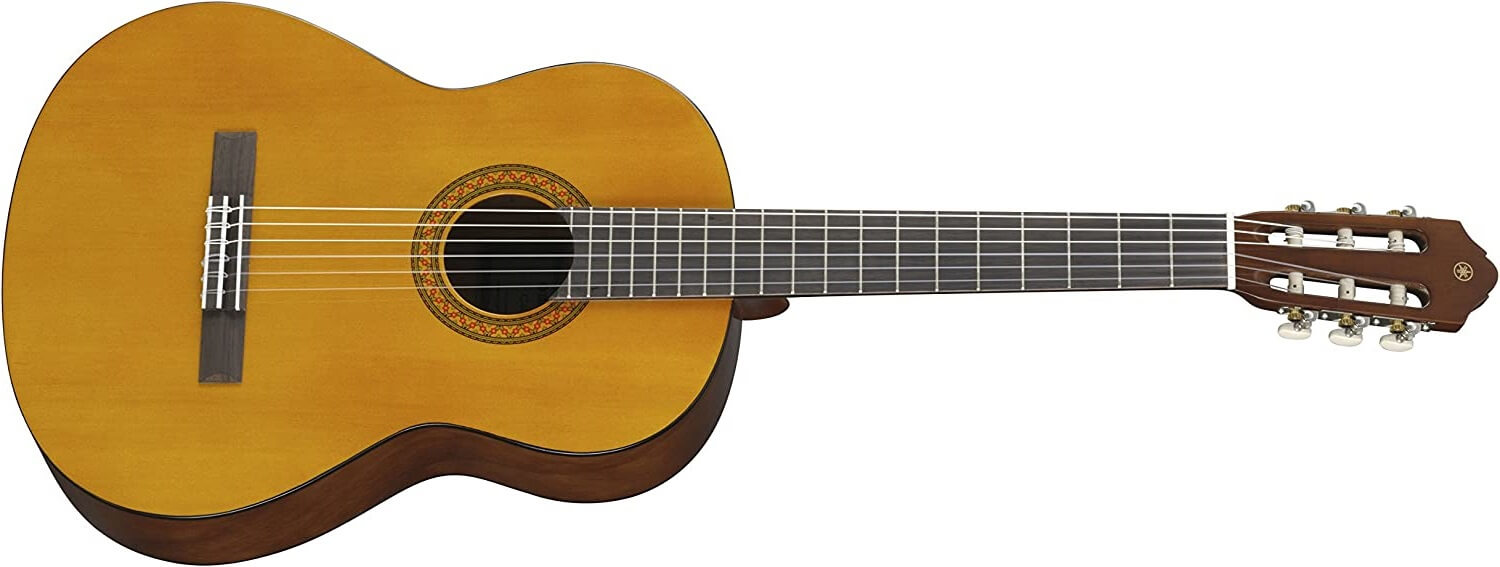
This guitar is a bit more special than the others on this list for the simple reason that it is the only classical guitar that we’ve mentioned so far.
If you’re not familiar with the term, a classical guitar is simply a nylon string acoustic guitar – no electricity is required.
For that reason, they’re sometimes called Spanish guitars or Flamenco guitars.
They’re also quieter than regular acoustic guitars, which makes them ideal for unplugged performances and practice sessions.
Now that we’ve got that out of the way, let’s take a closer look at the Yamaha C40II Classical Guitar.
This guitar is designed specifically and mostly for beginner guitar players.
It features a spruce top with meranti back and sides and a nato wood neck; plus the fingerboard and bridge are made of rosewood.
The C40II also has a gloss finish, which gives it that sleek and professional look that shines like no other.
What I enjoyed about this guitar is that the action is low, which makes it really comfortable for beginners who are just starting to learn how to play.
Aside from that, the guitar has a really nice, mellow sound that’s often found in more expensive classical guitars.
So if you’re looking for an affordable, beginner-friendly classical guitar, the Yamaha C40II is a great option you should definitely consider.
Pros:
- Low action makes it comfortable for beginners
- Sleek and professional look
- Great sound for the price
Cons:
- You might want something better
Taylor GS Mini Acoustic Guitar
(link to Amazon.com)

The Taylor GS Mini Acoustic Guitar is a smaller-sized guitar that still packs a powerful punch when it comes to its sound.
Its size makes it highly portable, yet it still has the full-size sound that many people are looking for in an acoustic guitar.
Additionally, the matte finish on the body of the guitar gives it a modern look that will appeal to many.
The guitar also has a built-in relief route, which is a feature that helps to improve the sound of the guitar in a way that is unique to this particular model.
The neck of the guitar is made from Sapele wood, which is known for its strength and durability.
The fingerboard is made from genuine African ebony, which gives the guitar a beautiful look.
On the other hand, the scale length of the guitar is 23-1/2 inches, and of course, it has 20 frets.
For people with smaller hands, this guitar is the perfect option because it is easier to play than a full-sized guitar.
Pros:
- The size of the guitar makes it highly portable
- Sound of the guitar is full and rich
- Has a very modern look
- Neck is made from strong and durable wood
Cons:
- The guitar may be too small for some people
How to choose an acoustic guitar for fingerstyle?
When choosing an acoustic guitar for fingerstyle, it is important to consider the body size and shape, as well as the type of wood used for the construction of the instrument.
The best guitars for fingerstyle are typically those with smaller body sizes, such as a parlor guitar or a 000 guitar.
These smaller-bodied instruments create a more intimate sound, which is perfect for fingerstyle playing.
The type of wood used is also important, as different woods will produce different tones.
Generally, guitars made with mahogany or rosewood will have a warm, rich sound, while those made with maple will have a brighter, more articulate sound.
When choosing an acoustic guitar for fingerstyle, it is also important to consider the action of the instrument.
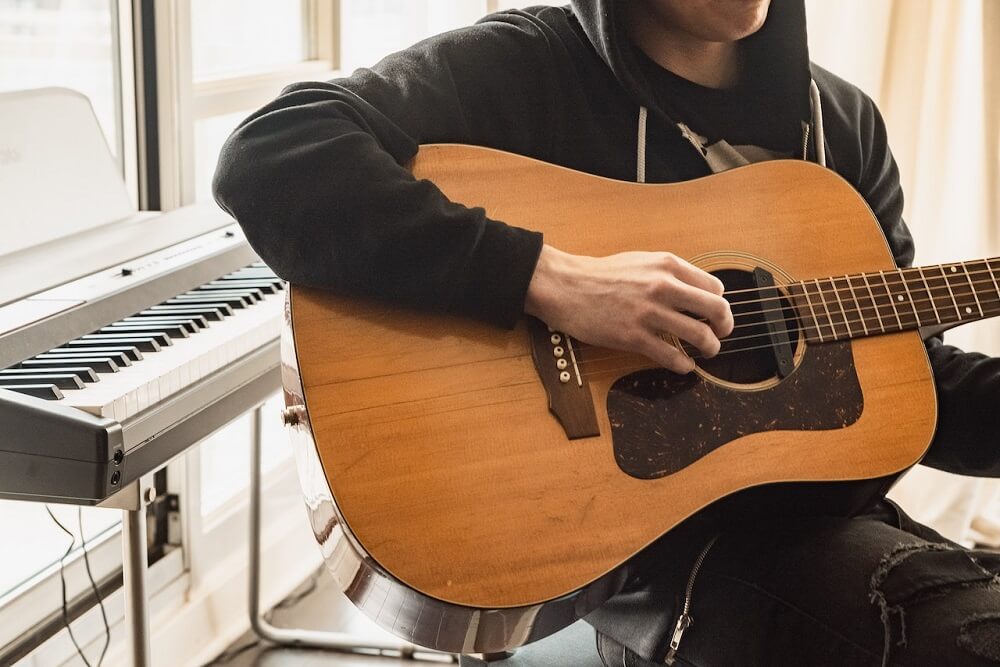
The action is the distance between the strings and the fretboard, and it can have a big impact on how easy or difficult it is to play the guitar.
For fingerstyle playing, lower action is typically better, as it makes it easier to press down the strings with the fingertips of the fingers.
Finally, it is also important to consider the string gauge when choosing an acoustic guitar for fingerstyle.
The string gauge is the thickness of the strings, and thicker strings are typically better for fingerstyle playing as they have more depth and richness to their sound.
At the end of the day, the best acoustic guitar for fingerstyle is the one that feels good in your hands and sounds good to your ears.
Take your time when shopping for an instrument, and make sure to try out a few different guitars before making your final decision.
It’s really all about personal preference when it comes to choosing an acoustic guitar for fingerstyle playing.
Consider what type of sound you’re going for, and then try out a few different guitars until you find one that feels right and sounds good to your ear.
How much should you spend on a fingerstyle acoustic guitar?
There is no set amount that you should spend on a fingerstyle acoustic guitar, as the price will vary depending on the make and model of the guitar.
However, it is generally advisable to spend around $300 on a quality instrument if you are a beginner, or +$500-$1000 if you are more experienced.
You may also want to consider buying a used guitar, as you can often find good quality instruments for less than half the price of a new one.
Whatever you do, make sure you try out the guitar before you buy it, as there is no substitute for actually playing the instrument to see if it is comfortable and suits your style.
The main issue with low-priced guitars is that, for the manufacturer to be able to sell them at such a low rate, they have to make some serious sacrifices in terms of quality.
In other words, the guitar is likely to be made from cheaper materials, and will not be as durable or sound as good as a more expensive guitar.
In addition, this usually also means low-quality control, which can lead to all sorts of problems, such as poor intonation, an action that is too high or low, and buzzy fretboards.
Let’s watch this YouTube video by Emerald City Guitars:
They go over 5 different things that you should look for when buying a used acoustic guitar.
Some of the things they mention are making sure the neck is in good shape, looking out for cracks, and whether the frets need some work or not.
At the end of the day, the point is to not be overcharged for something that’s worth way less money than they’re asking for.
What’s the best size for a finger-picking acoustic guitar?
Most people don’t usually have a problem when they play regularfull-sized guitars.
What to consider before buying an acoustic guitar for fingerpicking?
The guitar body
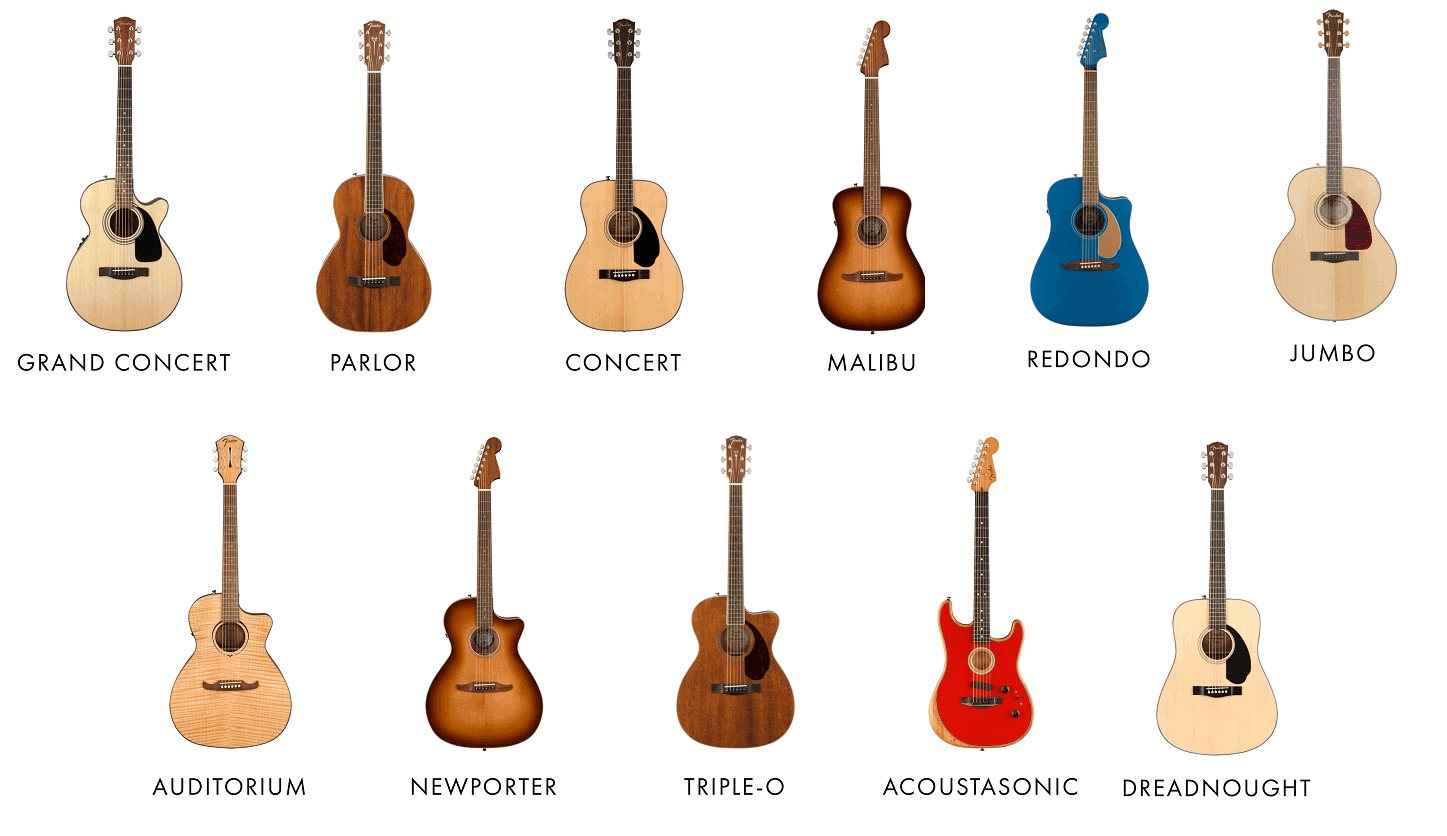
Your budget
Ultimately, I was able to learn and play, which in the end, it’s all that matters!
Strings
Wood type
Appealing look
Ease of use
Is learning to play fingerstyle on an acoustic guitar hard?
The simple answer is no, learning to play fingerstyle on an acoustic guitar is not hard.
However, like anything worth doing, it does take some time, effort, and practice to get comfortable and proficient at it.
But once you’ve put in the work, you’ll be able to enjoy the many rewards that come with playing this beautiful and versatile style of music.
One thing to remember is that everyone learns at their own pace!
So, don’t get discouraged if it takes you a little longer to get the hang of things, especially if you’ve watched those online videos of child prodigies playing perfectly executed fingerstyle runs and think, “Why can’t I do that?”
Just keep at it, and eventually, you’ll be playing the songs you love in the style you love.
At the end of the day, that’s what really matters.
Do you need long fingernails to play fingerstyle guitar?
No, you don’t really need long fingernails to play fingerstyle guitar.
In fact, many players trim their nails short so they don’t get in the way when they’re playing.
However, if you do have long nails, you can use them to your advantage by using them as picks!
This technique is called “nail picking” and it can give your playing a very distinctive sound, hence why many players choose to do it.
If you’re interested in trying out nail picking, then make sure your nails are well-groomed and filed down so they’re not too sharp.
You don’t want to end up hurting yourself when you’re playing!
When it comes to playing fingerstyle guitar, there’re many different techniques you can use and styles you can explore.
So, don’t be afraid to experiment and find what works best for you.
What is the difference between cheap guitars and expensive acoustic guitars?
What strings are best for an acoustic guitar?
The ones I use a lot are the Elixir Strings Phosphor Bronze Acoustic Guitar Strings (link to Amazon.com).
At the same time, it currently has about 5 stars on Amazon with more than 10,000 different reviews.
So this pack seems to be working very well for a lot of people.
Having said that, I don’t believe it makes sense to identify one specific pack as the “best” in this particular case.
Because everyone has distinct preferences and requirements, what works for you might not be suitable for the next person.
There are undoubtedly a variety of additional choices available that could provide you with the outcome you desire.
In my personal experience, choosing a set of strings has always included some trial and error.
I bought a pack, used it, then bought another, used that one, used another, used another, and so on, until I was able to remain with the one I liked the best.
Sounds crazy, but this wasn’t done in a year. Don’t go now and buy too many sets at the same time just to try them at once, instead, let it happen naturally over time.

Born and raised in Florida! I’ve been playing guitars for the past 5 years. Love to learn, and I’m always striving to achieve greater heights in music. Currently have a Fender Stratocaster as my main guitar.

